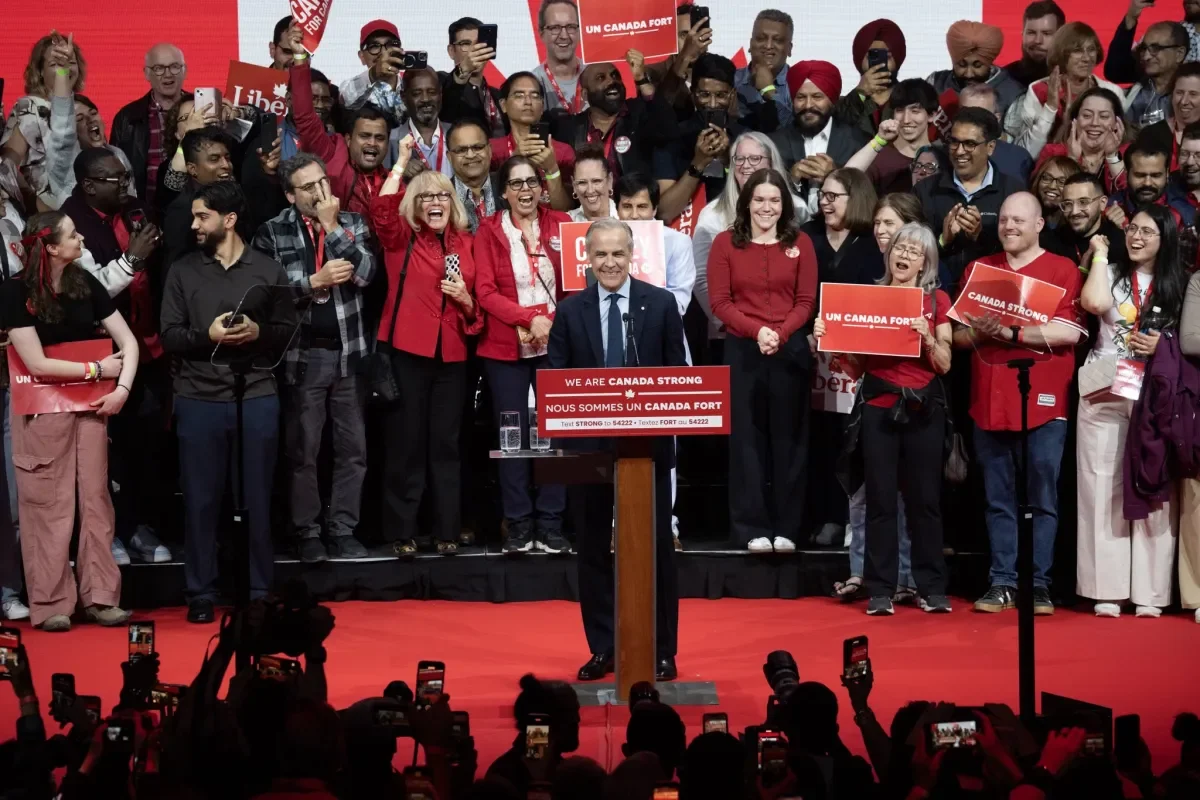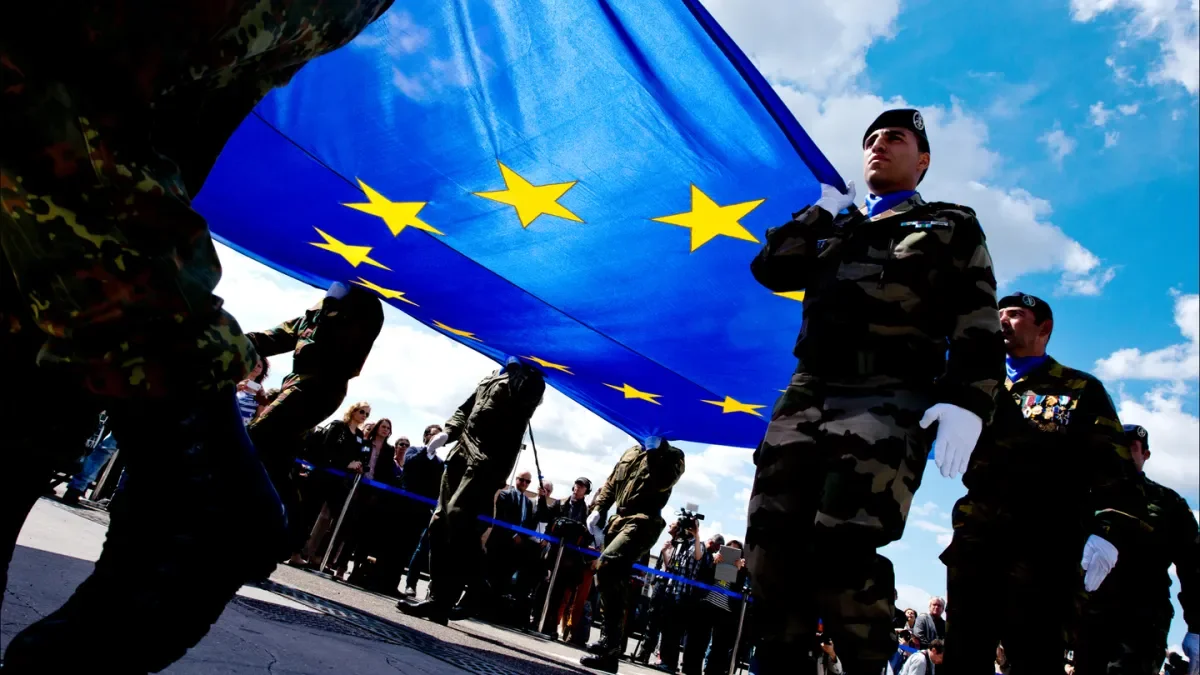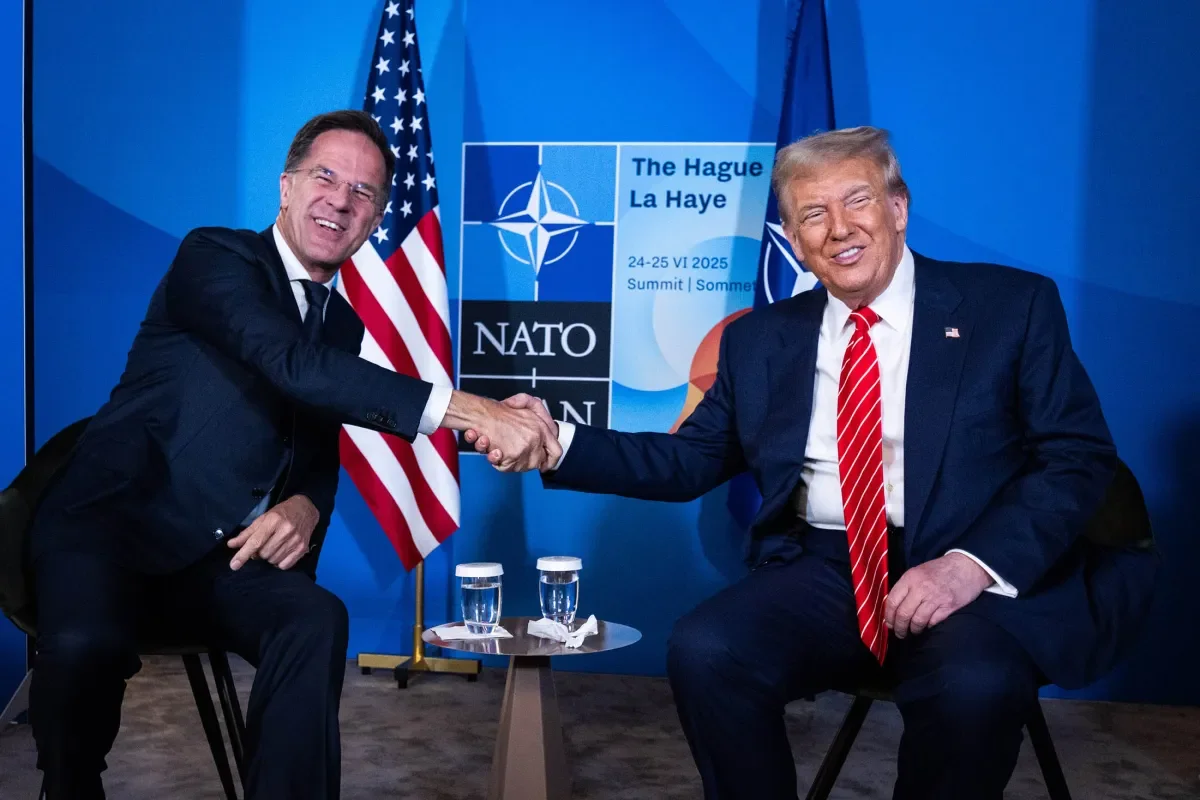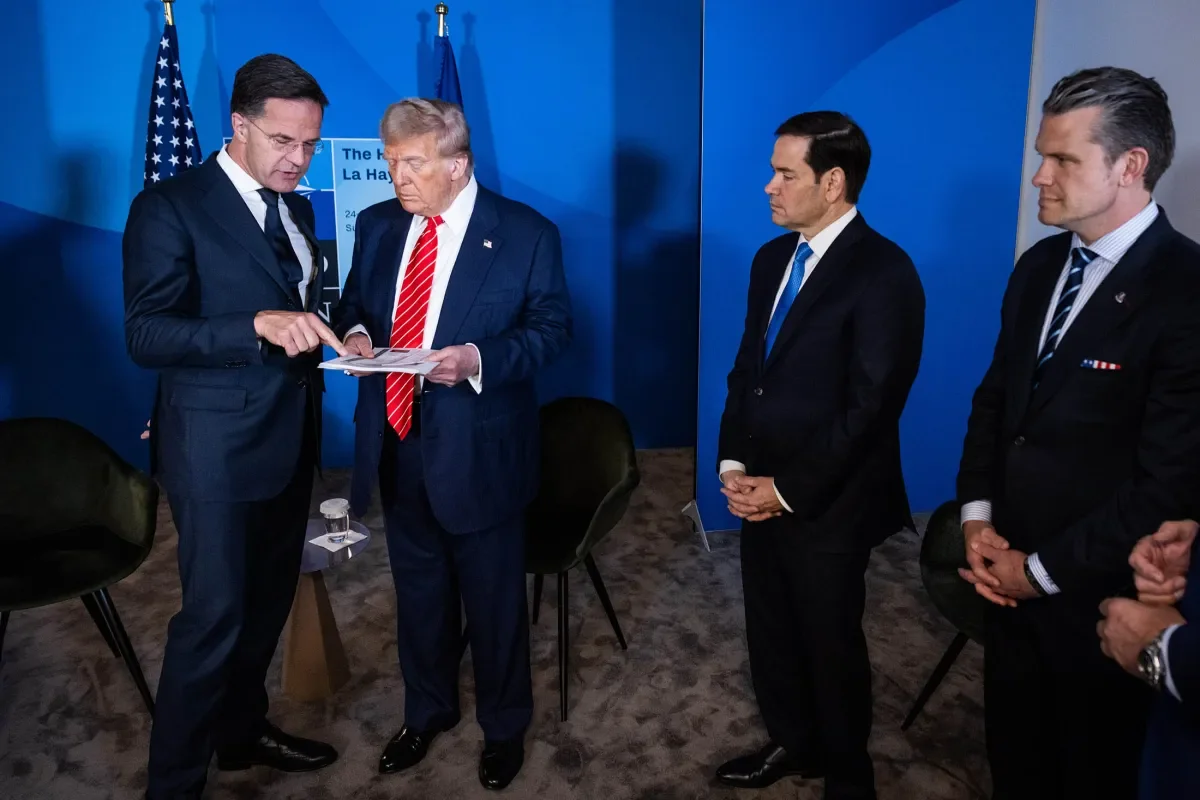
Ian Cooper (Dublin City University)
Canada’s election on Monday night showed that progressives can win in the age of Trump. Prime Minister Mark Carney won re-election by loudly and proudly defending Canadian sovereignty in the face of the US President’s aggressive behaviour, including his on-again-off-again trade war and threats to make Canada the 51st state.
Carney led the Liberal Party to a clear, but not resounding, victory in the Canadian federal election. With a 43.7% vote share, his party won 168 seats, just 4 seats short of an outright majority in the 343-seat House of Commons. The opposition Conservative Party had a surprisingly strong showing with 41.3% of the vote, but they won just 144 seats and their leader, Pierre Poilievre, lost his. The smaller parties were hammered: the sovereigntist Bloc Québécois won 23 seats, the leftist New Democrats won just 7 (also losing the seat of the party leader, Jagmeet Singh, who resigned) and the Greens won just one.
Just a few months ago the Liberals under the former PM Justin Trudeau seemed headed for a resounding defeat. Then Donald Trump was elected to a second presidential term in November. By itself this did not cause an existential crisis in Canada. It was only after his election that Trump started to exhibit increasingly bizarre behaviour towards his northern neighbour, making belittling remarks about “Governor Trudeau” and threatening to use economic coercion to annex Canada.
Trudeau announced his resignation in January, triggering a Liberal leadership contest which was won resoundingly by Mark Carney. Never having held elective office – and without even holding a seat in Parliament – Carney was sworn in as Prime Minister on March 16. Nine days later the election was called.
Carney was chosen because he seemed to Canadians to be the person with the right combination of managerial experience, economic expertise and reassuring demeanour to steer the country through the present crisis. Carney had the unique calling card of having twice been the governor of a central bank during a crisis – first the Bank of Canada (2008-2013) during the global financial crisis, and then the Bank of England (2013-2020) during the period of extraordinary disruption brought on by Brexit. Carney represented a safe pair of hands in contrast to the abrasive Poilievre who – despite a late effort to soften his image – employs a divisive style of politics reminiscent of Trump.
Six of the last eight federal elections have yielded a minority government, which seems to be the new normal in Canadian politics. In fact, in the last two elections (2019 and 2021), Justin Trudeau’s Liberals won the most seats despite winning fewer votes than the Conservatives. Carney’s minority government looks relatively secure by comparison, for now at least. Pierre Poilievre is not formally the Leader of the Opposition without a seat in the House of Commons. And the New Democrats, who lent their support to the previous Liberal government, are unlikely to want to see the new government fall in their current leaderless state.
Carney’s most important task will be to attempt to reset the Canada-US relationship, which means he must deal with the mercurial Trump. It is curious that the US President has for some reason been uncharacteristically diffident and even respectful in his personal comments about Carney. Seeming to forget his previous belligerence, after the election Trump called Carney a “nice gentleman,” announced that he would soon visit the White House, and talked about making a deal with him. Of course, in the Trumpian lexicon a “deal” can mean almost anything, including an agreement to put a last minute “pause” on an offensive and ruinous trade policy. What Canada will be looking for in the short term is an end to the tariffs – or failing that, at least some clarity and predictability in the bilateral trading relationship – perhaps in combination with some new arrangements on security.
Outside North America, many of Canada’s foreign relations are fraught. Canada’s relations with China and India were recently strained by the others’ frankly atrocious actions: China imprisoned two innocent Canadian citizens for nearly three years in retaliation for Canada’s arrest of a Chinese executive; and India conducted an assassination of a Sikh activist on Canadian soil.
Canada’s most promising relations are with Europe. Indeed, Carney pointedly made his first foreign visits not to Washington, as is customary for a Canadian leader, but to Paris and London. During that trip Carney memorably described Canada as “the most European of non-European countries.” Certainly Carney’s experience as governor of the Bank of England makes him already well-known in Europe. He is aware of the economic merits of the European Union, as he warned presciently of, and witnessed first-hand, the damage of Brexit to the UK economy. It remains to be seen just how ambitious he will be in bringing Canada closer to the European Union.
Carney will have an early opportunity to make his debut as prime minister on the world stage when Canada hosts the G7 summit in June. If it is anything like the last G7 summit held there, in 2018, it might give a vivid display of the difference between Canada’s relations with its European partners in comparison with its southern neighbour.

Ian Cooper, who is Canadian-Irish, is Senior Research Fellow at the Dublin City University and the Dublin European Law Institute (DELI).



